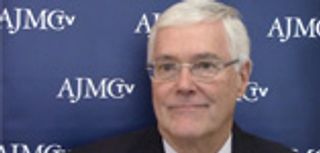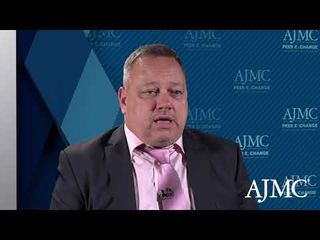
HIV
Latest News

Latest Videos

CME Content
More News

Many young people develop resistance to antiretroviral treatment or they experience lipoatrophy; many also have metabolic complications or inflammation via immune activation, noted Allison Agwu, MD, ScM, FAAP, FIDSA, Johns Hopkins University School of Medicine.

HHS establishes the Office of Climate Change and Health Equity; Johnson & Johnson HIV vaccine fails mid-stage trial in sub-Saharan African women; prevalence of overweight and obesity increases significantly in children and adolescents amid the COVID-19 pandemic.
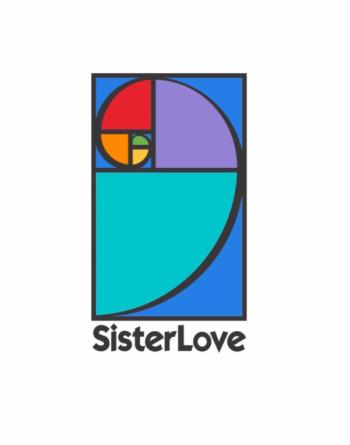
In 1989, in Atlanta, Georgia, Dázon Dixon Diallo established SisterLove Inc to fill the information and education gap many women, especially Black women, were facing on how the emerging HIV/AIDS epidemic could affect them.
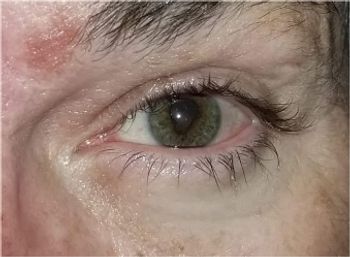
Research shows early symptomatic neurosyphilis and ocular syphilis is increasing, especially the latter.

Krajowe Centrum ds AIDS (National AIDS Center) in Warsaw, Poland, was founded in 1993 as part of the country’s Ministry of Health. Its chief area of advocacy and outreach is access to antiretroviral treatment, in addition to new areas of focus that include prevention of sexually transmitted infections and hepatitis C virus.

The findings suggest that people who inject drugs living with HIV need ongoing support with an emphasis on taking medication for opioid use disorder.

Asociaţia Română Anti-SIDA (ARAS; Romanian Association Against AIDS) was founded on April 10, 1992, just 3 years after the fall of communism, making it the first such organization in the country following a time when HIV was not officially acknowledged nor prevention of HIV and sexually transmitted infections discussed.

Findings of a randomized controlled trial revealed no differences among HIV diagnosis rates between targeted screening practices when compared with nontargeted practices.

Dawn Averitt opened the session, “Refocus on HIV: How Innovation in HIV Will Address Individual Patient Needs,” on day 1 of IAS 2021, this year's virtual annual meeting of the International AIDS Society, which took place July 18-21.

SisterLove Inc is a 32-year-old sexual reproductive health rights and justice organization with a core focus on HIV and sexually transmitted infections at the intersection of other challenges to women's sexual reproductive health and well-being.

The cumulative effects of binge drinking and HIV on neurocognitive functioning were investigated among 4 groups of patients in this recent study from researchers at San Diego State University and the University of California San Diego.

People living with HIV have known greater rates of stroke, but the reason for that risk was the focus of an abstract presented last week at IAS 2021, this year's virtual annual meeting of the International AIDS Society, which took place July 18 to 21.

Providers need to put themselves in their patients' shoes and think about how they would like to receive services, emphasized Helen Bygrave, MD, chronic diseases advisor for the Médecins Sans Frontières’ (Doctors Without Borders) Access Campaign.

An abstract presented at IAS 2021, this year's virtual annual meeting of the International AIDS Society, addressed health care disparities that persist among persons living with HIV, with the ultimate goal being to improve health equity for this patient population.

The federal government requires insurers to cover PrEP; Johnson & Johnson (J&J) and pharmaceutical wholesalers agree to settle opioid crisis lawsuits; NYC health care workers will be required to receive a vaccine or weekly tests for COVID-19.

Adults living with HIV sometimes get lost, and we need to optimize their outcomes, noted Allison Agwu, MD, ScM, FAAP, FIDSA, Johns Hopkins University School of Medicine.

By 2020, UNAIDS had hoped to meet the 90-90-90 goal it originally set in 2014: to have 90% of people living with HIV know their status, 90% be on antiretroviral therapy (ART), and 90% have achieved viral suppression. The world fell short of meeting that goal, with just 81% knowing their positive status, two-thirds on ART, and 59% being virally suppressed.

According to this retrospective analysis of preexposure prophylaxis (PrEP) utilization rates in the United States, fewer than 20% of indicated users are taking the HIV preventive medication.

This new study from Spain represents the first extensive look at late presentation of persons living with HIV, following the 2014 introduction of guidelines on early HIV diagnosis.

Carl Schmid, MBA and Ian Frank, MD discuss the process of initiating HIV PrEP beginning with a clinical patient evaluation.

Data from several surveys conducted since 2005 indicate a continuous gap in HIV prevention and transmission between adolescent females and males in sub-Saharan Africa.
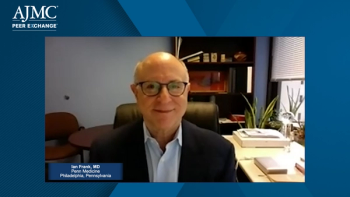
Ian Frank, MD and Jeffrey Crowley, MPH describe the CDC PrEP Care System Process and eligibility criteria for receiving PrEP.

A multidisciplinary panel of experts provides an overview of the economic burden of HIV and the role of pre-exposure prophylaxis (PrEP) in preventing HIV transmission.

The Supreme Court recently upheld the Affordable Care Act, under which HIV and AIDS are considered preexisting conditions, by a vote of 7 to 2.

Despite gains in HIV testing rates among individuals 13 years and older, total testing rates remain at suboptimal levels among both commercial insurance and Medicaid beneficiaries.












